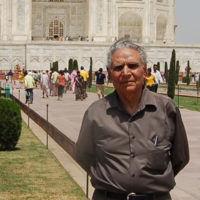NEW DELHI — While the Left parties here went from 61 seats to 25 seats in the parliamentary elections, their mood is upbeat. The coalition which includes CPI and CPI-M will continue the strategy of building a Third Front, meaning building up non-Congress forces and anti-BJP forces. The BJP is a far-right, Hindu chauvinist party and the main opposition to the Congress-led government.
In the Left’s bastion of West Bengal, where the Left Front has governed for more than 30 years, the parties lost ground, going from 35 seats to 15. Recognizing the severe blow, the parties said a thorough evaluation of the loss would take place.
In Kerala, another left ruled state with a total of 20 seats, voters have fluctuated between the Congress Party and the Communist parties ffor the last 50 years. This time the Congress Party got the benefit from being the opposition. The Congress-led coalition won 16 seats and the Left won only four.This is
not new in Kerala.
In the third communist-ruled state, Tripura, with only two seats at stake, both seats were retained by the left.
Corporate India and their supporters abroad have never really accepted the left, even during the four years the left supported the Congress Party-led government from 2004-2008. Every week they had been scheming to torpedo it. The left parties stood in the way of anti-people economic ‘reforms’ like not allowing the selling off of state-owned banks,, preventing the privatization of public pensions and not allowing them to become part of market-driven speculations. The left fought to uphold labor laws in opposition to forces that seek to make them more ’employer-friendly.’
The left also initiated many programs for which the Congress Party got credit. Putting public funds to benefit farmers and waiving their loans were programs the left initiated. Thousands of farmers have committed suicide in recent years because of their huge debt burden. This program helped relieve the suffering.
The breaking point between the left and Congress was over the Bush-initiated nuclear agreement. The left had placed in the Common Minimum Program with Congress the continuation of an independent foreign policy. The left said the U.S.-India nuclear agreement violated an independent foreign policy and was detrimental to India’s interest. The left organized mass marches and rallies to warn Indian people of the dangers. They sought to postpone the signing until after the U.S. and Indian elections. But all of this was ignored. The Congress won support from the Socialist Party and managed to survive the no-confidence vote. The left parties withdrew its support from the government.
Indian politics are very complicated. Whlie the unity between the Left and Congress forces existed, the far-right coalition, led by the BJP, was building up its forces. The NDA coalition, led by the BJP, is the most favored Indian political formation by the forces of neo-liberalism and privatization at the World Bank and World Trade Organization.
Some planning to eject the left out took place outside India, including at a meeting in Japan. Corporate India, it seems, colluded with the NDA to get rid of the Congress with a no-confidence vote and then win the election. For example before the elections, the Indian corporate giant, Tata, withdrew its Nano car factory project from West Bengal and moved it to NDA-ruled state of Gujarat. However the NDA came in a distant second with 180 seats to Congress’ 206 (with another possible 55 from allies). The left went to third place with a total of 80 seats. The left is claiming credit for helping to limit the NDA’s seats.
It seems that in this election, voters wanted a stable government at the center. This gave Congress major campaign leverage. The hurridly-assembled Third Front did not win the confidence of the people.
But the coming struggles to defend people’s rights and improve living conditions will galvanize the left and Third Front. The working millions of India and the middle class will find the left fighting for them, which will, in turn, grow the Third Front.
Ramakant Sharma, a retired doctor, is a veteran activist from the CPI and active in the United States on peace and justice issues.












Comments